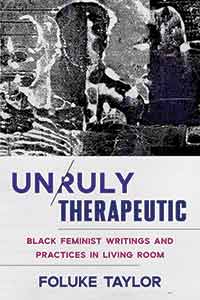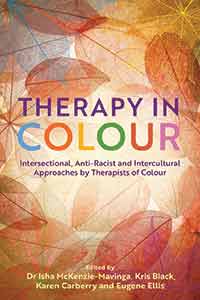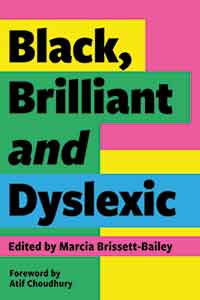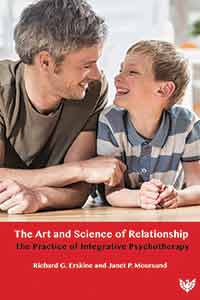
Unruly Therapeutic: black feminist writings and practices in living room
Foluke Taylor (WW Norton)
This is a difficult book to read – which is not a criticism. Taylor’s creative use of language, which is in turn poetic, prosaic and personal, and her ‘unruly’ writing style meant that I had to concentrate, really concentrate on the journey this book took me on. And what a journey. Taylor describes her experience of ‘unbelonging’ and ‘out-of-placeness’ as a black feminist in mythical, theoretical and actual landscapes. She shares recollections of her birth from the ‘forbidden territory’ of a coupling between a white woman and a black man, and memories of being required to dance but not speak in a school play, kept in line by the roles assigned to her gender.
Taylor plays with semantics – ‘the holes left by all these missing things; holey… rather than holy, as in blessed’ – always encouraging the reader to wonder and wander a different path and let our minds wander too and challenge the philosophies of so many dead white men. She describes her intention as a mother to be straightforward, get things straight and meet the needs of her children straight away. She speaks of deep shade, poor lighting and all the other ways she is made to feel unsafe, and of why her name is ‘black’.
In chapter one of this book, Taylor states that ‘to think of centring black women as a necessity only for black women is another manifestation of the problem’, the problem being, I think, that of ‘othering’. She said in an interview that her book was not only for black women which I took as an invitation to me, a white woman, to read it. I extend that invitation to you, whoever you are.
Jeanine Connor is a psychodynamic psychotherapist
Next in this issue

Therapists Challenging Racism and Oppression: the unheard voices
Neelam Zahid and Rachel Cooke (eds) (PCCS Books)
What does it mean for a therapist to be complicit in allowing oppression to unfold and snake its way through our society and structures? How does this manifest in the therapy room? My mind whirled as I digested these first-hand accounts from therapists of colour. Collectively, they demonstrate how the therapy profession reproduces and reinforces our racist society.
Zahid is flooded with emotion when recalling her name being ridiculed as a child. As a trainee, her tutor misidentifies her, then publicly denies racism. A white peer asks her to lay at their feet during role play. I am awash with memories (having conveniently tucked them away) of times I have overheard racism in a workplace – and done nothing. Cooke recounts how she has erred with clients in a bid to demonstrate her cultural competence. I squirm; this admission brings up my own concerns about being incompetent in the therapy room. When we feel uncomfortable, what might be going on? How might we lose touch with what might be going on for another? Tehara’s account of being racially abused in his therapy room is shocking, but I’m not shocked by the racism. Growing up in a mixed white/ Sikh household in 1990s northern England means I know people can be racist. What shocks me is Tehara’s honesty about his response.
Finally, I understand I am being asked to bear witness. A part of me does not want to acknowledge these realities. I see how I step into the shoes of the oppressor or the silencer in a bid to silence and oppress my own fears. This book does not look away, and neither will I.
Zorana Halpin is an integrative counsellor

Therapy in Colour: intersectional, anti-racist and intercultural approaches by therapists of colour
Dr Isha McKenzie-Mavinga, Kris Black, Karen Carberry and Eugene Ellis (eds) (Jessica Kingsley Publishers)
This collection emerging from the Black, African and Asian Therapy Network (BAATN) is ambitious in its aims and broad in its intended audience. It is a resource designed to inspire, educate and inform potential students, trainees, practitioners and lay people. Contributors discuss the trauma of racism and discrimination, the dominance of the Eurocentric perspective in therapy, the lack of attention to these issues in training institutions, and the ways in which the contributors have experienced and addressed these challenges.
The book comprises 21 chapters from a broad range of experts and is organised into five sections entitled ‘Anti-racist reflection’, ‘Training’, ‘CPD’, ‘Therapeutic needs and psychological wellbeing’ and ‘Intersectionality’. The editors have skilfully avoided the traps that can afflict collected works; the book has a coherence and flow that make it a compelling read. The styles, approaches and messages of the contributors naturally vary but this lends freshness and interest to the whole and locates the book in a space which manages to be scholarly, experiential, challenging and accessible. The book contains wisdom, powerful and impactful personal testimony, and important concepts and models relevant to training and practice.
Ellis writes that this is the book the members of the BAATN leadership team ‘would have liked to have available to us when we were students’ – it is hoped it will become a core text. Reflecting on my own training, I can only endorse that hope. This book would, I believe, have made a difference for all of us in my cohort and our future clients. I am grateful for the opportunity to learn from it now.
Kay Hoggett is an integrative counsellor, coach and supervisor

Black, Brilliant and Dyslexic
Marcia Brissett-Bailey (ed) (Jessica Kingsley Publishers)
This book is a brilliant, motivational and empowering collection of first-hand stories focusing on the lived experience of being black and dyslexic. The overall message of positivity is an inspiring one. A range of black and dyslexic contributors share how differently neurodivergence is experienced when it is not pathologised. Dyslexia is championed throughout this book, which offers a fresh perspective for people whose lived experience of being black and dyslexic may be struggle, shame or isolation. Although consistent aspects of experiences are identified – for example, challenges within educational settings and the compounding nature of racial inequality – the personal tone of the book stresses the importance of respecting the uniqueness and individuality in the community.
The deeply personal style of each contributor means that I, as a neurotypical black woman, could recognise the experiences of blackness and racial discrimination while further learning about the nature and impact of dyslexia and neurodivergence. I also gained a greater understanding of the possible thoughts, feelings and experiences of my own students. Examples of what dyslexia can look like in an academic setting before and after it has been recognised provided me with knowledge that will undoubtedly help me become a more empathic educator.
Through the collection of positive voices, black and dyslexic people have simultaneously been represented and present aspirational role models for the wider community. This book is a great professional resource for therapists or anyone in a supportive role who wants to take a first step in expanding their ability to support black, dyslexic people. It is also a valuable personal resource for black people and the wider dyslexic community.
Sarah Henry is an author, counsellor, counselling tutor and race and ethnicity trainer

Groupwork with Refugees and Survivors of Human Rights Abuses: the power of togetherness
Jude Boyles, Robin Ewart-Biggs, Rebecca Horn and Kirsten Lamb (eds) (Routledge)
The editors of this collection of essays have produced an inspiring set of accounts covering a huge variety of ways in which the power of groupwork can be harnessed. The book explores group projects arranged into sections called ‘Building communities’, ‘Body and soul’ and ‘Together through talk’.
The theme of providing culture and context-specific interventions is embraced in each of the 19 different projects that are discussed, which is strengthened by the centrality given to the voices of group members themselves. Despite the diversity of the group activities – which range from football to faith-sensitive talking therapy to music – the basic tenet of finding connection within a community is always present.
Aside from providing a wealth of information and insight about groupwork in humanitarian settings, this book perhaps offers a useful challenge to many therapists who are bound to a relatively inflexible therapeutic frame. The case studies advocate for approaches that stretch the boundaries of the therapeutic role as many modalities understand it, and have a clear focus on how the needs of trauma survivors might be addressed.
In 2021, the book was the subject of a successful crowdfunding project that raised enough money to make the book available online worldwide for free. As an accessible resource, despite the practical and financial restrictions of many humanitarian organisations and workers in different parts of the world, I am confident that this book has much to contribute. For therapists working closer to home, I recommend this book to those interested in the therapeutic potential of groupwork in its broadest sense.
Emily Harrison is an integrative therapist


The Art and Science of Relationship: the practice of integrative psychotherapy
Richard G Erskine and Janet P Moursund (Phoenix)
This book is divided into three distinct sections: ‘Theoretical foundations’, ‘Therapeutic interventions’ and ‘The transcript’. As an integrative counsellor, I found this the most comprehensive and useful book on the subject I’ve come across. The book is built around the work of Erskine, who established the Institute for Integrative Psychotherapy in NYC in 1976, and is written in beautifully accessible language by his colleague Moursund. ‘Theoretical foundations’ gives an overview of the development of integrative psychotherapy and a grounding in Erskine’s approach, which integrates influences from psychoanalysis, Gestalt therapy and transactional analysis. There is a look at the importance of relationship as a fundamental need in human development, including Erskine’s excellent ‘eight primary relational needs’ for thriving and growth in partnerships. My favourite part of the book is ‘Therapeutic interventions’, which feels very containing and takes you step-by-step through the therapeutic encounter, starting from the first session to eventually saying goodbye. It covers themes such as attunement, resistance and repression, enactments and regression, and specific therapeutic interventions. The final section of the book is a transcript of a therapy session, with plentiful footnotes referring to earlier parts of the book, adding a great deal of depth.
I felt uneasy with the authors’ rationale for their decision not to include a chapter on multicultural issues – for reasons that you may or may not agree with – and the book’s cover, which depicts two white people and could easily have been made more inclusive.
That aside, this is an engaging textbook about working relationally that would be useful for any therapist, regardless of their modality.
Kevin Franke is an integrative counsellor and group facilitator
